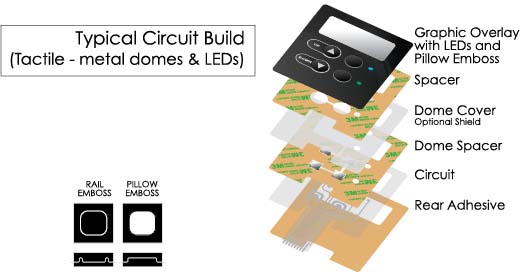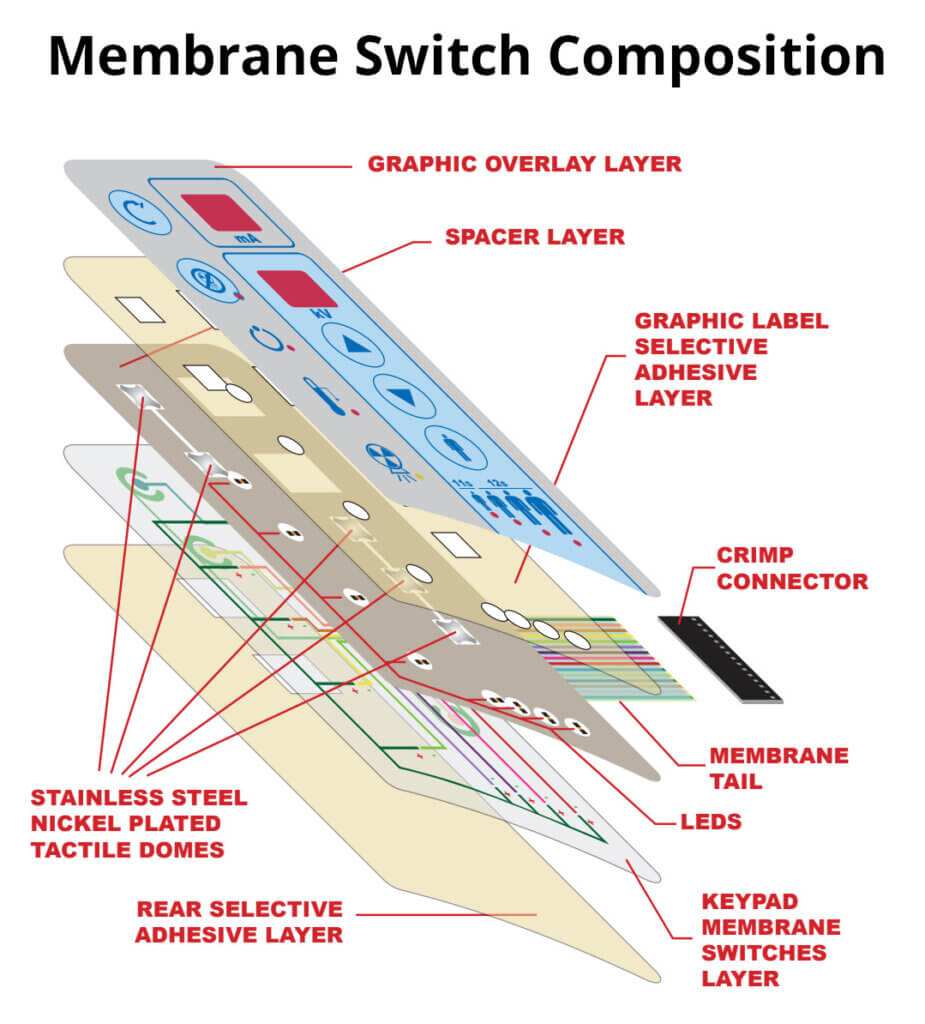Membrane Switch: A Comprehensive Guide to Its Uses and Applications
Membrane Switch: A Comprehensive Guide to Its Uses and Applications
Blog Article
Recognizing Membrane Switches: The Secret to Trustworthy and sturdy Controls

What Are Membrane Layer Buttons?
Membrane buttons are an advanced option in the realm of interface technology, integrating capability and layout perfectly. These gadgets work as a user interface in between customers and digital systems, incorporating numerous parts into a compact format. Usually created from adaptable, slim layers of products, membrane layer buttons are created to react to touch, making it possible for customers to connect with equipment and digital gadgets properly.
The main aspects of a membrane switch include a printed circuit layer, visuals overlay, and a spacer layer that protects against unplanned activation. The visuals overlay can be personalized to show brand identity or user choices, boosting aesthetics while ensuring use. Membrane layer buttons are typically utilized in numerous applications, consisting of clinical devices, customer electronic devices, and industrial devices, owing to their sturdiness and resistance to environmental factors such as dampness and dirt.
One of the key benefits of membrane buttons is their capability to endure wear and tear, making them ideal for high-traffic settings. Furthermore, they are lightweight and need minimal room, enabling innovative layouts in product growth. Generally, membrane switches over represent a practical and effective choice for modern-day electronic user interfaces, weding innovation with user-centric design principles.
Just How Membrane Switches Over Work
The procedure of membrane changes depend upon a straightforward yet reliable system that equates customer input right into digital signals. These switches consist of numerous layers, normally including a graphic overlay, a spacer layer, and a circuit layer. When a customer presses the switch, the top layer flaws, allowing a conductive aspect in the circuit layer to reach a matching conductive pad on the bottom of the graphic overlay. This get in touch with shuts the circuit and sends an electronic signal to the gadget, showing that the switch has been turned on.
The layout of membrane layer buttons can vary, but they typically include domes or responsive components to provide feedback to the individual, improving the general experience - membrane switch. The products made use of in membrane layer buttons, such as polyester or polycarbonate, add to their resilience and resistance to environmental aspects, consisting of dampness and dirt. The printed circuits are generally encapsulated, which protects them from wear and tear over time.
Benefits of Membrane Layer Buttons

Furthermore, membrane layer buttons are recognized for their resilience. Built from robust materials, they are immune to dirt, wetness, and physical wear, which dramatically expands their lifespan compared to traditional mechanical buttons. This toughness makes them especially appropriate for high-traffic atmospheres and applications needing durability.
Another significant benefit is the ease of cleaning and upkeep. The smooth surface area of membrane layer switches over lessens dust accumulation and is typically invulnerable to spills, making them optimal for settings that require frequent sanitization.
In addition, membrane layer buttons provide a streamlined profile, bring about a thinner layout you can check here that can be incorporated into various tools without including bulk. This feature not just improves the aesthetic appeal yet likewise adds to a more ergonomic item style.
Applications of Membrane Buttons
Flexible and easy to use, membrane switches locate applications across a wide array of markets, including clinical devices, customer electronics, and industrial tools. In the medical area, these switches are indispensable to gadgets such as diagnostic tools, client monitoring systems, and mixture pumps, where reliability and convenience of cleaning are essential. Their capability to maintain and hold up against severe settings performance makes them ideal for such applications.

In customer electronics, membrane layer buttons are utilized in items like microwaves, washing devices, and push-button controls - membrane switch. Their sleek design allows for intuitive interface, boosting the overall customer experience while supplying resilience and resistance to wear and tear
Industrial equipment likewise gains from membrane switches, especially in control panels for equipment and automation systems. These buttons offer explanation protection against dirt and dampness, ensuring consistent efficiency in tough settings. Moreover, their customizable attributes allow producers to tailor them to certain functional demands, boosting performance and capability.
Choosing the Right Membrane Switch
When selecting a membrane layer button, it is essential to consider numerous variables that affect efficiency and suitability for particular applications. The primary considerations consist of ecological conditions, tactile responses, durability, and layout requirements.
First, examine the operating atmosphere; switches revealed to dampness, chemicals, or extreme temperatures call for certain products to guarantee longevity and capability. Next, assess the need for responsive comments. Relying on individual interaction, some applications may take advantage of a responsive reaction to confirm activation, while others might like a non-tactile design for visual factors.
Sturdiness is one more vital element; membrane layer buttons need to be designed to hold up against constant use, impacts, and abrasion. Ensure the picked button can endure the anticipated lifecycle, especially in high-usage circumstances.

Verdict
In verdict, membrane layer changes function as essential parts in the style of trusted and long lasting control systems across numerous markets. Their compact style, combined with durable building and customizable functions, useful source enhances customer interaction while making certain durability sought after atmospheres. The versatility of membrane switches permits tailored options that meet certain operational requirements, enhancing their importance in modern-day technology. As markets proceed to develop, the relevance of integrating effective membrane switch remedies can not be overstated.
Membrane changes stand for a critical element of contemporary user interface layout, mixing capability with resilience in various applications.Membrane switches are a sophisticated service in the realm of individual interface modern technology, incorporating capability and layout seamlessly. Generally constructed from versatile, thin layers of materials, membrane switches are developed to respond to touch, allowing individuals to engage with equipment and digital tools effectively.
The design of membrane switches can differ, but they frequently include domes or responsive elements to give responses to the customer, improving the general experience.In final thought, membrane switches offer as crucial parts in the style of dependable and durable control systems throughout different industries.
Report this page